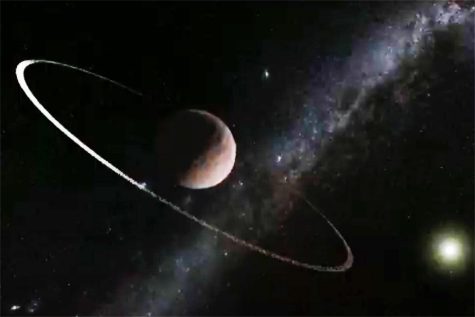Put Some Rings on It
Dwarf planet Quaoar challenges theories about rings around planets
February 22, 2023
In the Milky Way Galaxy there are four planets containing rings, those being Uranus, Jupiter, Saturn and Neptune. At least there were. In 2002, the dwarf planet Quaoar was discovered close to Neptune. Normally this wouldn’t be that important. However, this dwarf planet has rings that surround it. But, these rings are not supposed to even hold together. What are the rings even made of?
NASA believes that they are made from “billions of small chunks of ice and rock coated with other materials such as dust.”
At least, Saturn’s are. The newly discovered dwarf planet, Quaoar, challenges this idea. The phenomenon results from a measurement coined the Roche Limit, described by McGill School of Computer Science as the “distance within which a celestial body held together only by its own gravity will disintegrate due to a second celestial body’s tidal forces exceeding the first body’s gravitational self-attraction.”
To put this in layman’s terms: the distance that a planet or object in space is will be measured by how far it takes before it will disintegrate after colliding with another planet’s tidal forces.
Armed with this new knowledge, scientists can now observe these celestial objects differently just by looking at Quaoar. All it took was a single dwarf planet, discovered in 2002, to change the way that astronomers and scientists observe our planets.









